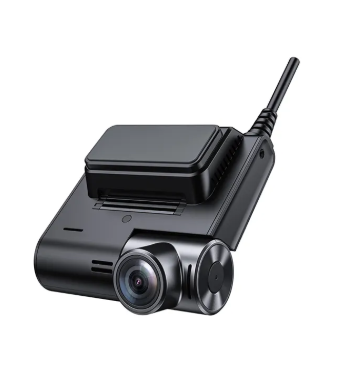Essential Features of Outdoor 4G Night Vision Cameras
High-Resolution Infrared Night Vision Technology
Infrared night vision technology relies heavily on advanced image sensors and high-quality lenses to provide clear images in low-light conditions. High-resolution imaging, typically found in outdoor 4G night vision cameras, ensures that night-time images are crisp and detailed, which is crucial for security purposes. These cameras often boast resolutions such as HD 1080p or higher, allowing users to reliably interpret and react to security concerns even in the dark. Adjustable infrared sensitivity is essential as it allows the camera to adapt to varying lighting conditions, enhancing its versatility in different environments.
4G Cellular Connectivity for Remote Monitoring
The integration of 4G connectivity in outdoor cameras permits real-time video streaming and efficient monitoring from remote locations. Unlike previous generation connectivity, 4G offers improved data speeds and reliability, making it indispensable for contemporary surveillance needs. With the sprawling increase in 4G network coverage, these cameras become even more relevant for outdoor surveillance. Businesses leveraging 4G night vision cameras have reported enhanced monitoring capabilities, which underscores the potential for improved security management using such technologies.
Weatherproof and Durable Design
Outdoor cameras are designed to withstand harsh environmental conditions, using materials that offer resilience against rain, snow, and dust. These cameras often carry specific IP ratings, which measure the level of protection against environmental factors. High-frequency failures of outdoor devices due to environmental exposure highlight the need for robust designs that ensure longevity and reliability. Consideration for impacts and vibrations, especially in commercial settings, dictates the need for highly durable cameras that can continue functioning optimally under stress.
Motion Detection and Real-Time Alerts
Modern outdoor cameras employ cutting-edge motion detection technologies such as Passive Infrared (PIR) and video analytics to identify movements accurately. Real-time alerts provided by these systems allow immediate response to unexpected motions, significantly enhancing security measures. The ability to customize detection zones becomes critical in minimizing false alarms, which is a typical challenge users encounter. Data reflect that areas utilizing advanced motion detection systems see reduced crime rates, affirming the effectiveness of these technologies in proactive security management.
Advantages of 4G Connectivity in Outdoor Surveillance
Reliable Coverage in Remote Locations
One of the standout advantages of 4G connectivity in outdoor surveillance is its ability to provide reliable coverage in remote or isolated locations where traditional systems often falter. Unlike Wi-Fi-dependent setups that suffer from range limitations, 4G networks offer extensive national and global coverage, ensuring consistent connectivity. According to statistics from GSMA, by 2025, 4G networks are projected to cover 97% of the world's population, highlighting the reliability of 4G for surveillance purposes. Users in rural areas have shared anecdotes of significant improvements in their surveillance capabilities, attributing the prevention of blind spots to the robust 4G network. In these scenarios, 4G connectivity ensures uninterrupted surveillance, enhancing security in places traditionally difficult to monitor effectively.
No Dependency on Wi-Fi Networks
When it comes to outdoor surveillance, 4G connectivity eliminates reliance on Wi-Fi networks, which can be a game-changer in maintaining seamless connectivity. Unlike Wi-Fi, which is prone to range restrictions and connectivity drops, 4G utilizes cellular networks, bypassing typical Wi-Fi vulnerabilities that can compromise surveillance systems. For instance, busy urban areas with competing Wi-Fi signals or large properties with expansive grounds often face Wi-Fi dead zones impacting security footage availability. By switching to 4G, these issues are largely mitigated, as cellular networks offer a more robust and dependable connection. Furthermore, studies, like those published in the Journal of Network and Computer Applications, emphasize the vulnerability of Wi-Fi networks to breaches, further reinforcing the security benefits of direct 4G connections.
Low Latency for Live Streaming
The advantage of low latency in 4G connectivity is particularly noticeable in live streaming from outdoor cameras, enhancing the user experience for real-time monitoring. With 4G networks, latency is significantly reduced compared to older network technologies, allowing for smoother live feeds without delay. This technical aspect plays a crucial role in security operations where real-time decision-making is vital. Security personnel or homeowners can react swiftly to potential threats caught on the camera, thereby potentially thwarting criminal activity. According to a comparison of latency times, typical 4G networks achieve latency as low as 50 milliseconds compared to several hundred on older 3G networks, supporting more efficient security monitoring. Testimonials from businesses using 4G cameras highlight the enhanced responsiveness in their surveillance operations, thanks to this low-latency connectivity.
Key Considerations for Selecting a 4G Night Vision Camera
Battery Life vs. Solar Power Options
When selecting a 4G night vision camera, one of the key considerations is the power source, primarily the trade-offs between battery life and solar power. Battery-operated cameras typically offer an estimated life span between three to six months, depending on usage and environmental factors. However, frequent battery replacement can become tedious and environmentally unfriendly. On the other hand, solar-powered cameras provide a sustainable and eco-friendly solution since they harness solar energy to recharge their batteries automatically. The efficiency of these solar panels, especially in climates with sufficient sunlight, allows for a more continuous power supply without the interruptions of battery changes. According to studies, when installed properly, solar-powered cameras significantly reduce the total energy consumption and contribute positively to environmental conservation efforts. This makes them an attractive option for users interested in both practicality and sustainability.
Local vs. Cloud Storage Solutions
Choosing between local and cloud storage solutions for your surveillance camera footage involves understanding the pros and cons of each. Local storage usually involves storing footage directly on a memory card or a local drive, providing immediate access and control over the data. This option limits dependency on an internet connection but might present risks, such as data loss due to theft or damage. Conversely, cloud storage offers peace of mind with data redundancy and access from anywhere. However, it can incur ongoing costs and relies on stable network connections. From a security perspective, cloud storage can shield against local thefts, but it might introduce risks related to data breaches. According to recent statistics, there is an increasing trend towards cloud solutions due to their convenience and rapid data recovery capabilities. Furthermore, many experts suggest that the long-term costs of cloud storage might be outweighed by the benefits it provides in terms of data security and accessibility.
Compatibility with Mobile Networks
Network compatibility is another critical factor when choosing a 4G night vision camera, as it directly affects connectivity and performance. It's crucial to ensure that the camera is compatible with existing mobile networks like GSM or CDMA. These networks can significantly impact the functionality of the camera, especially in areas with variable network support. For instance, GSM networks currently dominate the global market, making it a preferable option for broad compatibility. Testimonials from users who faced connectivity issues underscore the importance of checking compatibility with local carriers before purchase. In several cases, users resolved such issues by switching to compatible SIM cards tailored to specific regional networks. Therefore, understanding the technical specifications and ensuring network compatibility can prevent potential disruptions and enhance the overall functionality of your surveillance system.
Installation Tips for Optimal Performance
Positioning for Maximum Cellular Signal Strength
Positioning your 4G night vision camera correctly is critical for maximizing cellular signal strength and ensuring optimal performance. Proper placement significantly reduces connectivity issues, which can be a common hurdle with wireless devices. To find the best position, it's important to assess the location of nearby cell towers. Tools or apps like OpenSignal can provide valuable insights into signal strength during the installation process. Real-world Example: A common mistake is placing the camera in a shaded corner of a building, which can severely disrupt signal reception and lead to intermittent connectivity.
Optimizing Camera Angles for Night Vision Clarity
Camera angles play a crucial role in the clarity and effectiveness of night vision footage. Angles that avoid obstructions and focus on strategic focal points can enhance visibility dramatically. For instance, adjusting a camera to prevent glare or shadows from nearby lights can improve image clarity. Users often testify that a slight change in angle, such as positioning the camera slightly downward to avoid street lights, can make a substantial difference. Example: In a backyard setup, directing the camera towards entry points and away from reflective surfaces often yields the clearest night-time images, turning potential vulnerabilities into strengths.
Maintenance and Troubleshooting
Weatherproofing Checks for Longevity
Routine maintenance checks are vital for ensuring your camera's weatherproofing remains intact, ultimately prolonging its lifespan. It's essential to look for signs of wear and potential vulnerabilities in weatherproof seals, such as cracks or gaps, which can lead to moisture ingress. Conduct regular visual inspections, especially after adverse weather events. Experts recommend performing these checks quarterly to prevent any deterioration. Statistics show that cameras with properly maintained seals can have their lifespan extended by up to 50%. Remember, preventive maintenance is key to camera longevity.
Resolving Connectivity Issues in 4G Cameras
Connectivity issues are common when using 4G cameras, but there are effective steps to troubleshoot them. Firstly, ensure your SIM card is active and has sufficient data. Checking your camera's firmware and updating it to the latest version can tackle compatibility issues. For sporadic connectivity, repositioning the camera to maximize cellular signal strength can make a significant difference. Users have successfully resolved connectivity problems by using apps that measure 4G signal strength in various locations. With consistent troubleshooting efforts, maintaining a reliable camera connection becomes straightforward, supported by data indicating improved connectivity reliability in recent camera models.
FAQ Section
What is infrared night vision technology in 4G cameras?
Infrared night vision technology allows cameras to capture clear images in low-light conditions by using advanced image sensors and high-quality lenses.
How does 4G connectivity benefit outdoor camera surveillance?
4G connectivity enables real-time video streaming and efficient remote monitoring, ensuring reliable coverage even in remote locations.
Why is weatherproofing important for outdoor cameras?
Weatherproofing ensures that outdoor cameras can withstand harsh environmental conditions like rain, snow, and dust, thus enhancing their durability.
How do motion detection alerts enhance security?
Motion detection alerts provide real-time notifications of unexpected activities, allowing for immediate response and improved security measures.
What should be considered when choosing a 4G night vision camera?
Consider factors such as power source options, storage solutions, and compatibility with mobile networks to ensure optimal camera functionality.
What are effective troubleshooting steps for 4G camera connectivity?
Ensure SIM card activity, update camera firmware, and adjust camera positioning for maximum signal strength to resolve connectivity issues.
Table of Contents
- Essential Features of Outdoor 4G Night Vision Cameras
- Advantages of 4G Connectivity in Outdoor Surveillance
- Key Considerations for Selecting a 4G Night Vision Camera
- Installation Tips for Optimal Performance
- Maintenance and Troubleshooting
-
FAQ Section
- What is infrared night vision technology in 4G cameras?
- How does 4G connectivity benefit outdoor camera surveillance?
- Why is weatherproofing important for outdoor cameras?
- How do motion detection alerts enhance security?
- What should be considered when choosing a 4G night vision camera?
- What are effective troubleshooting steps for 4G camera connectivity?



